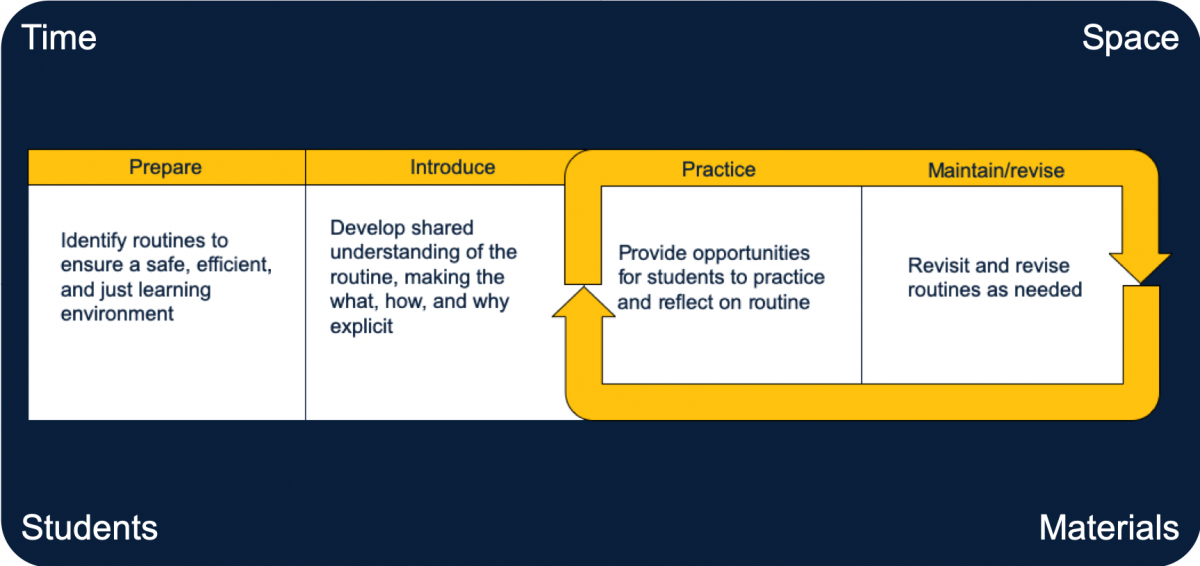What is implementing organizational routines work?
Teachers organize time, space, and materials to support students to engage in the regular tasks of classroom life. Through the selection and use of organizational routines, teachers establish learning environments in which students have equitable access to resources, time, space, and voice in the classroom. Teachers introduce students to routines and provide opportunities to practice, analyze, and modify the routines. In some cases, they develop and enact routines collaboratively with students. Choosing and using routines requires discretion because many routines silence and marginalize some students and propagate dominant ways of being related to race, class, and gender.
How does implementing organizational routines advance justice?
Creating a safe and positive learning community is crucial for students to learn and thrive. Organizational routines support students to interact as members of the learning community and to access the resources they need. At the same time, they have the potential to over-regulate students’ bodies and voices and to reproduce patterns that marginalize some groups and identities. Teachers are careful to select and use routines in ways that respect students’ autonomy and treat them as integral members of the community.
What are the elements of the practice?
The diagram below breaks down work that teachers do when they are implementing organizational routines. This breakdown, or decomposition, helps teacher educators to break down the practice into a set of parts that can be observed and practiced.
